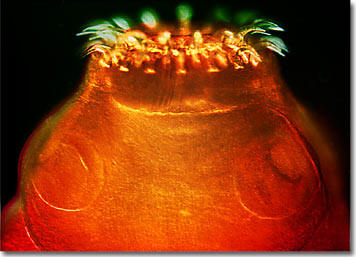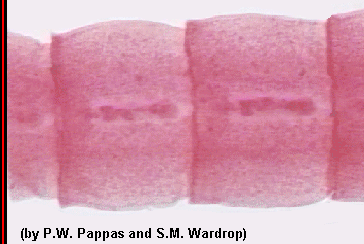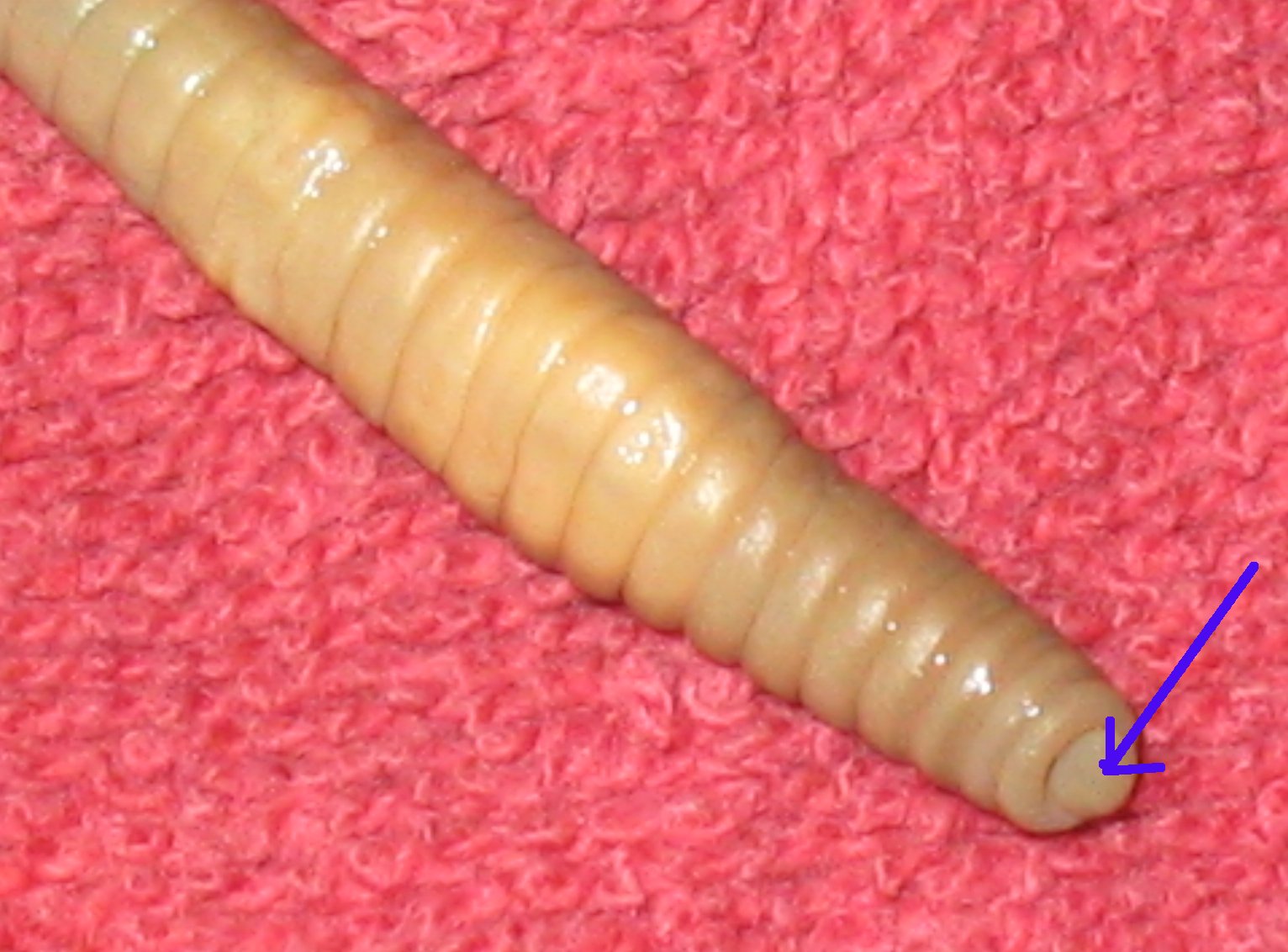
#1.
This knob-like head with hooks and suckers is called a
______________.
Image from: http://www.microscopyu.com/galleries/smz1500/images/tapewormscolexsmall.jpg
WORMS CARD REVIEW
Use answer sheet to answer the ?'s.
 |
#1.
This knob-like head with hooks and suckers is called a ______________. Image from: http://www.microscopyu.com/galleries/smz1500/images/tapewormscolexsmall.jpg
|
#2.
Tell a kind of worm you would expect to see #1 in.
#3. What kind of coelom do all Flatworms have?
#4. Name the PHYLUM for ROUNDWORMS.
#5.
Hookworms, pinworms, Ascaris, Trichinella, and
filarial worms are __________ worms.
#6.
______________ are excretory organs in earthworms.
#7.
A. insect bites
B. eating food/water contaminated with
eggs
C. larvae burrowing through the skin
D. eating undercooked meat containing
cysts
#8.
Which part acts as an earthworm’s brain?
#9.
The animal in which adult parasitic worms live and reproduce is called the
_______________ host.
#10.
Planaria and flukes have a ONE opening shared digestive/circulatory space called
a ______________ for digesting food.
#11.
An animal with both male and female reproductive organs is called a(n)
________________.
#12.
The ridge inside an earthworm’s intestine that increases surface area is
called a
#13.
Name the type of FLATWORM with no mouth, anus, or digestive organs.
#14.
The larval form of the blood fluke Schistosoma
lives in what animal?
#15.
Which form of nitrogen waste is excreted by earthworms?
#16.
Earthworms have ______________ fertilization and
____________ development.
internal or external
direct or indirect
#17.
Excretory organ in FLATWORMS like Planaria are called _________________.
 |
#18. These hermaphroditic reproductive structures seen in tapeworms are called
_________________.
Image from: http://www.biosci.ohio-state.edu/~parasite/labeled_taenia.html |
#19.
Worms that are transmitted by insects are called _______________ worms.
#20.
A _______________ is a layer made of FUSED CELLS that protects tapeworms and
flukes.
#21.
Part in an earthworm where food is ground up and digestion happens.
#22.
Name a worm that can reproduce ASEXUALLY.
#23. Give Kingdom, Phylum, and class for earthworms
| #24. Which type of coelom is found in round worms? | Image
from: http://www.lander.edu/RSFOX/310images/310bilatImage.htm Ectoderm |
#25.
Name 3 characteristics shared by all worms.
#26. Tell one way nitrogen waste and digestive waste are different.
 Image by RIEDELL |
#27. This flap of tissue that overhangs
the earthworm's mouth is called the__________________________
#28. Tell something #27 can sense. |
#29. Give the body system for cerebral ganglia.
#30 Give the function for setae.
1.
Scolex
2. tapeworm
3. acoelom
4. Nematoda
5. Round
6. nephridia
7. C - larvae burrow into skin
8. cerebral ganglia
9. primary host
10. gastrovascular cavity
11. hermaphrodite
12. typhlosole
13. tapeworm
14. snail
15. urea
16. external fertilization & direct development
17. flame cells
18. proglottids
19. filarial
20. tegument
21. gizzard
22. Planaria
23. Animalia, Annelida, Oligochaeta
24. Round worms have a pseudocoelom (C)
25. Invertebrates, protostomes, elongated bodies, cephalization, bilateral
symmmetry, cerebral ganglia for brain, breathe through skin
26.
| DIGESTIVE WASTE | NITROGEN WASTE |
| Comes from leftover undigested food | made by body cells during metabolism of proteins |
| Handled by digestive system | Handled by excretory system |
| feces | ammonia, urea, uric acid |
27. prostomium
28. light/dark or chemicals (food)
29. nervous
30. provide traction